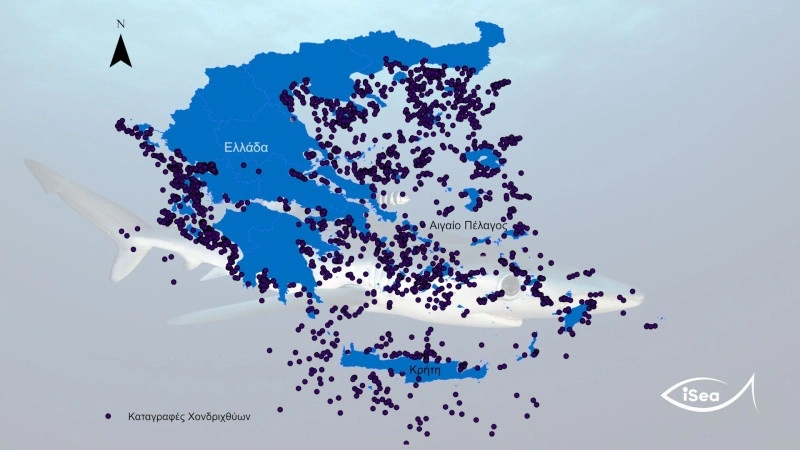The waters of Greece are teeming with sharks and rays—at least, that’s what the latest data suggests. According to findings collected over the past 90 years by the environmental organization iSea, Greek seas have become a thriving habitat for a diverse range of these species.
Specifically, researchers have compiled 4,540 documented sightings from various data sources, encompassing 33 species of sharks, 29 species of rays and skates, and one species of chimaera. These findings highlight the remarkable biodiversity of Greece’s marine ecosystems over the last nine decades.
A Major Milestone in Marine Research
These results will be officially presented at the European Elasmobranch Association (EEA) 2024 Conference, the largest event in Europe dedicated to the study and conservation of sharks and rays. The conference will take place in Thessaloniki from October 21 to 24, under the auspices of the Region of Central Macedonia and the Municipality of Thessaloniki.
This landmark event gathers scientists, conservationists, and enthusiasts from across the continent to share research, strategies, and passion for the protection of these often misunderstood marine species.
Mapping 90 Years of Marine Presence
Environmental scientist and iSea program coordinator Roxani Naasan Aga-Spyridopoulou has developed a comprehensive map documenting every recorded sighting from the last 90 years. According to her, the sheer density of data is astounding:
“It’s nearly impossible to find a spot in Greek marine territory where sharks and rays haven’t been present,” she said.
Her work compiles data from an impressive array of sources—academic theses, social media, mainstream news outlets, biodiversity databases, citizen science projects, government reports, and scientific studies.
A Foundation for Future Research
“The goal of this study,” Spyridopoulou explains, “was to create a foundation for new research programs, to provide a clearer picture of species distribution, and to help future studies focus on specific areas using this detailed mapping.”
One striking aspect of the research is that nearly 55% of the data has never been published in scientific journals, while 20% comes directly from citizen science efforts—highlighting the importance of public engagement in environmental research.
“Interestingly, from 2010 to 2023 alone, we recorded more than 2,500 sightings, which shows how much our understanding has grown in recent years,” she added. “These species are crucial apex predators, and it's vital we continue studying and protecting them.”
The study not only sheds light on the richness of Greek marine biodiversity but also offers a roadmap for the future—paving the way for targeted conservation efforts and greater awareness of the fragile, fascinating world beneath the waves.










